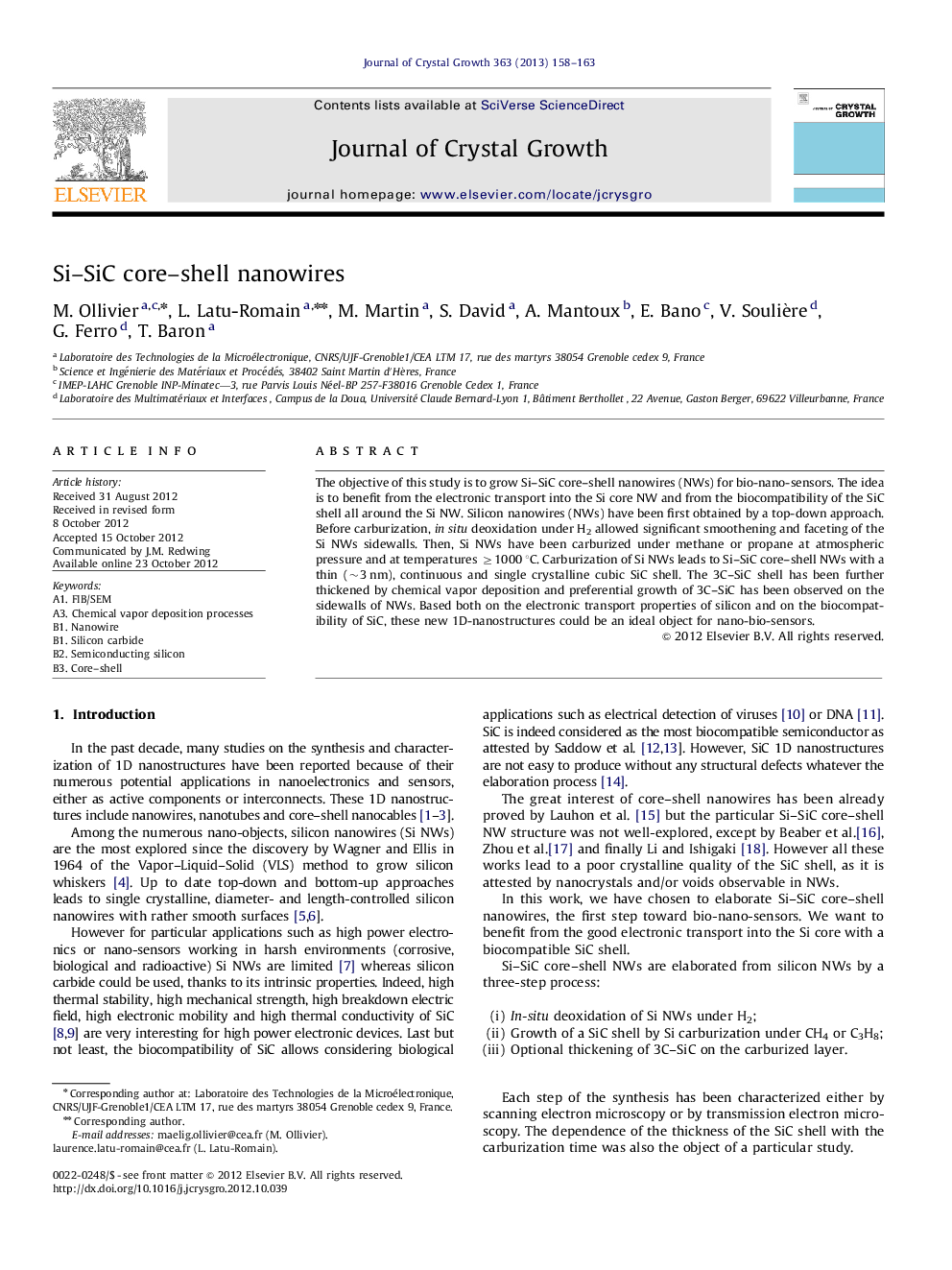| Article ID | Journal | Published Year | Pages | File Type |
|---|---|---|---|---|
| 1791371 | Journal of Crystal Growth | 2013 | 6 Pages |
The objective of this study is to grow Si–SiC core–shell nanowires (NWs) for bio-nano-sensors. The idea is to benefit from the electronic transport into the Si core NW and from the biocompatibility of the SiC shell all around the Si NW. Silicon nanowires (NWs) have been first obtained by a top-down approach. Before carburization, in situ deoxidation under H2 allowed significant smoothening and faceting of the Si NWs sidewalls. Then, Si NWs have been carburized under methane or propane at atmospheric pressure and at temperatures ≥1000 °C. Carburization of Si NWs leads to Si–SiC core–shell NWs with a thin (∼3 nm), continuous and single crystalline cubic SiC shell. The 3C–SiC shell has been further thickened by chemical vapor deposition and preferential growth of 3C–SiC has been observed on the sidewalls of NWs. Based both on the electronic transport properties of silicon and on the biocompatibility of SiC, these new 1D-nanostructures could be an ideal object for nano-bio-sensors.
► Carburization of silicon nanowires. ► TEM study of the crystal growth of the SiC layer. ► Epitaxial growth of 3C–SiC on Si nanowires. ► Discussion of the Si diffusion through the SiC layer
